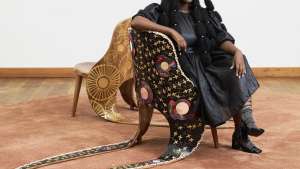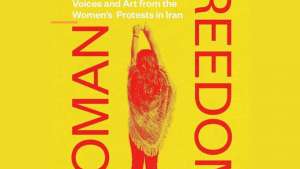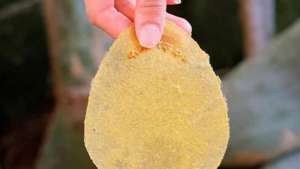Durban-based Nkululeko Mthembu – a Design Indaba Emerging Creative for 2022 – is the director of PISTA Ventures, a research and design practice at the intersection of cultural intelligence, design thinking and technology. The innovative young entrepreneur became more attuned to the needs of society on a recent backpacking journey across the continent.
He tells Design Indaba what design has taught him, why empathy matters, and what he’s working on at the moment.
1. What drew you to design, and what is most interesting to you about design?
I had a head for science and technology at school, and after a bout in the built environment, I found myself in the ICT arena. There were parts of ICT that I found too rigid, so I explored and tinkered, and after taking a trip to Kenya and meeting Mark Kamau, a UX Designer, I came across an all-encompassing discipline that embraces the humanities, sciences, technology, and engineering. I now understand this to be human-centred design using design thinking. The ability to interpret and enhance the natural performance of people and the planet through design excites me. The impact of design drives me. My interest and fascination with design was probably sparked while reading about the Great Renaissance and Bauhaus. Both design eras came after a strong period of conflict, and it is the restorative quality of design that impresses me about design.
2. Tell us a little bit about how the intersection of design thinking, technology and cultural intelligence informs your work?
The philosophy of my practice can be described thus: “As music is the space between notes, so science is the space between data points.” I have a deep appreciation of the humanities, which is juxtaposed with the sciences and engineering to create new value.
I am a firm believer in human-centred design and as such invest hours into research, especially in indigenous knowledge systems and local area knowledge. This approach allows me to understand the context within which I solve problems, and sets the foundation for which techniques, methodologies and approaches I use. It allows me to create compelling narratives and informs the way in which I design products, develop services strategies, and build ventures. The output of this approach is oftentimes ‘human-scale technologies’ that represent a distilled truth of solving a particular problem.
3. Tell us about some of the projects you have worked on to date.
My practice designs products, service strategies and ventures.
Service:
We helped stokvels formalise into cooperative financial institutions and developed an association strategy. This involved many stokvels in the province and was geared to help women access alternative financing for their small businesses. We developed a roadmap, a decision matrix, a monitoring and evaluation toolkit, and a playbook that would help them allocate resources effectively.
Product:
We formed part of a collective at The MakerSpace that built robot arm kits using microelectronic components. The purpose of the project was to introduce mechatronics at a citizen level. Our involvement was to assemble and test the various arms along the production line. We have also helped to build micro-weather stations. The purpose of this project was to advocate for environmental justice in a port city that has a bustling petrochemicals industry. Our involvement meant introducing high-school learners to Arduinos – micro-electronic components – visualising the data from the sensors and building the solution with them.
Social venture:
We’re working on a pair of spectacles made from recycled materials and ocean plastics with uMugqa Studio. Research conducted in a local school revealed that 52% of its pupils had visual impairments, and we later learnt that this is one cause of how a child performs and behaves. We endeavoured to incorporate waste pickers into the project as a source of waste plastic, and in so doing mapped out their network and daily routine and collected some qualitative data.
4. Who or what influences you, and why?
Primarily Sir David Adjaye, Theaster Gates, Mariam Kamara, Francis Kéré, Ibrahim Mahama and Okwui Enwezor. Their design language is self-critical, and they invert terms and concepts to find new meaning in the essence of things. They treat design as a living thing and know how design acts in the world. Their work carries a strong African vernacular, a mindful understanding and amplification of African traditional religion and diviner culture in a contemporary way. They have a magical quality of being able to unfold narratives in their work in the most meaningful and intimate ways. I am aspiring to this quality in my practice.
5. Tell us how your African travels inform your social design, and what problems you would like to solve for?
I spent four months backpacking Africa and met government officials, businesspeople, academics, civil society actors and a palette of colourful personalities. This period stripped away some bias, widened my myopic view of the continent, and allowed me to expand my perspective. It showed me the diversity and connectedness Africans have in a continent that oscillates between the past, present and future. The journey taught me how to navigate across contexts seamlessly, be it by learning local languages, appreciating cuisines, participating in ceremonies, or immersing myself in different typologies.
I’ve learnt to pick up accents better; understand slang in relation to knowledge transfer; the use of colour and meanings in cultures; how Africana are knowledge-storage vessels; how architecture influences people's daily movements; how movement and the transitory nature of trade informs migration patterns; the importance of folklore and knowledge preservation; and what motivates people.
This experience has given me the latitude to empathise with people better and build products and services across multiple groups in a considered way. It has given me more bandwidth to engage with the world better. All of this translates into practice.
The work of Olalekan Jeyifous on Afrofuturism is by far my favourite visual representation of what I think is happening in Africa right now. I like to think in systems, and some of the problems I would like to solve for which he vividly portrays in his works are:
Early childhood development. I watched a cartoon recently and was gobsmacked at the script. I would love to collaborate with an animation studio to create a series with an African narrative. I would like to couple this with a whole ecosystem of toys, board and digital games.
Food systems. Geopolitics and other socioeconomic forces have exposed how vulnerable our food systems are on the continent. I would love to see how my practice might contribute to this challenge.
Health sciences. The Covid-19 pandemic revealed many aspects of our health systems and I feel we can contribute to it through a service system.
e-Governance. With a youngish population, Africa has a booming generation of digital natives. I would love to contribute to how we can democratise information and make governments more accountable.
6. What does design mean to you?
I put a lot of emphasis on the rootedness of what I do and understand that every project I work on has a responsibility to enhance someone’s life. I always endeavour to use design to add value. Design means nothing to me without data, and as such, my practice positions itself on data-driven design.
Data might inform, but it is stories that move people, so design needs to have powerful storytelling. Design must have an aesthetic quality. It must be functional and have a beautiful form.
As Sir David Adjaye says: “I like the idea of design as a sensibility – each industry and each design sector has its own parameters and narratives, but it is the job of a designer to have the awareness to be able to engage with those structures.”
7. What are you working on at the moment?
I’ve been invited to join a committee at the Astrophysics Research Centre at the local university. My goal here is to translate scientific findings into commercial products. I hope to distil insights from the research to build citizen-focused solutions in themes such as food systems, climate change, the built environment and health sciences. Together with Black Box, we developed a Crisis Map at the height of the KwaZulu-Natal floods and are now working on the research aspects. We aim to create a body of knowledge that could assist actors in disaster management, response and prevention for future incidents.
We’re also working on a project that is using subsea and aerial drone technology with some machine learning aspects for asset management and preventative maintenance in maritime and marine environments. And we’re building a digital solution that will help connect young people living in Africa via travel and tourism. This is more tinkering with the gig economy concept. It would be interesting to share insights as the project matures.
Read more:
Announcing Design Indaba’s Emerging Creatives Class of 2022.
A virtual leap for the lab.
Story of my life.
Credit: Nkululeko Mthembu










